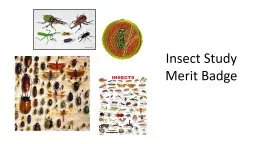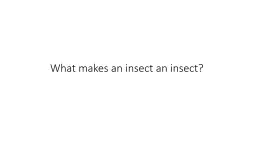PPT-Insect Study Merit Badge
Author : emma | Published Date : 2022-06-18
Requirement 1 a Explain to your counselor the most likely hazards associated with exposure to ants and bees and what you should do to anticipate help prevent mitigate
Presentation Embed Code
Download Presentation
Download Presentation The PPT/PDF document "Insect Study Merit Badge" is the property of its rightful owner. Permission is granted to download and print the materials on this website for personal, non-commercial use only, and to display it on your personal computer provided you do not modify the materials and that you retain all copyright notices contained in the materials. By downloading content from our website, you accept the terms of this agreement.
Insect Study Merit Badge: Transcript
Download Rules Of Document
"Insect Study Merit Badge"The content belongs to its owner. You may download and print it for personal use, without modification, and keep all copyright notices. By downloading, you agree to these terms.
Related Documents














